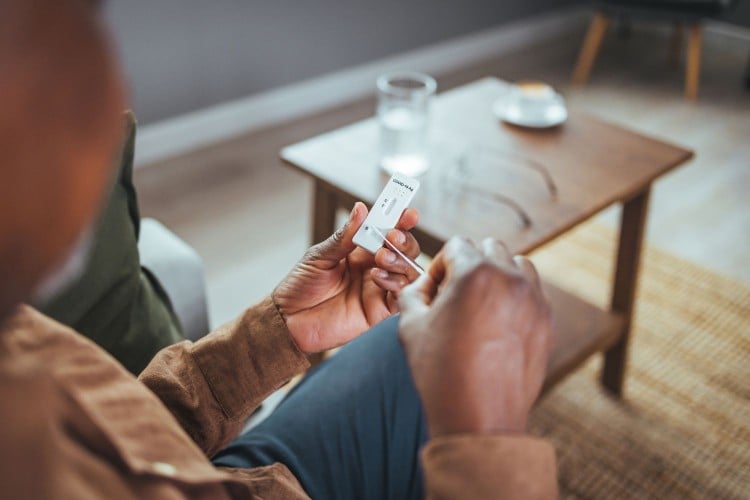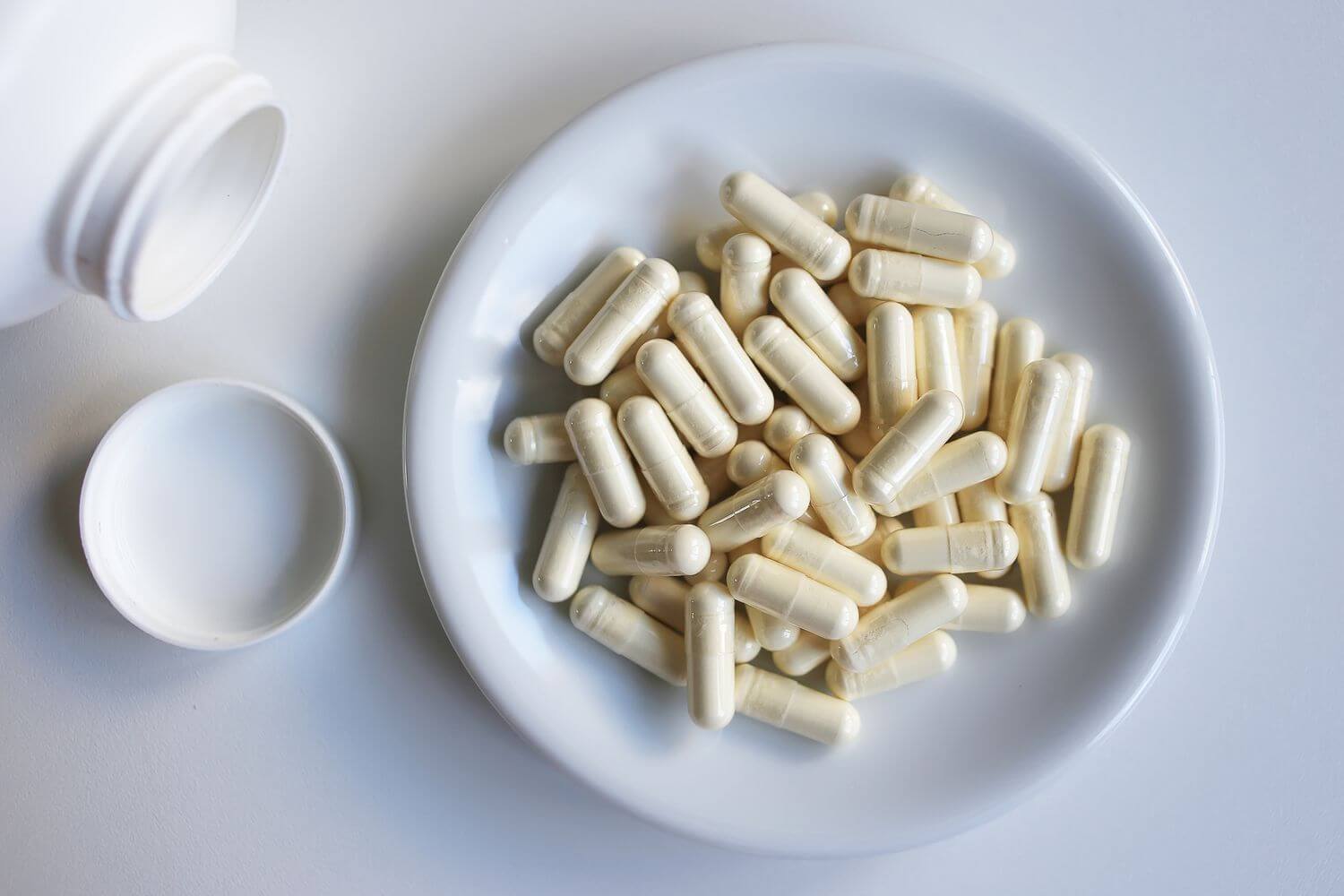- New research found that a person’s viral load is highest four to five days after COVID-19 symptoms begin.
- If you decide to wait until day four or five to test for COVID but are already seeing symptoms, avoid interacting with others.
- Experts recommend people who may need antiviral treatment for COVID to test at the first sign of symptoms, since these treatments are most effective when started immediately.
Before you jump to take a COVID-19 test at the first sign of a symptom, take a moment to consider the strategy behind your timing.
A new study found that when a person is infected with COVID, their viral load is likely highest four to five days after their symptoms begin.
The research, published in the journal Clinical Infectious Diseases, implies that at-home antigen tests may not be useful before someone’s viral load is highest.
Using a test before peak viral load could increase the risk of a false negative.
“What we found was that on the fourth to fifth day of symptoms, your viral load is at its highest,” Jennifer Frediani, PhD, assistant professor at Rollins School of Public Health at Emory University in Atlanta and first study author, told Health.
“Since home tests can be less sensitive, if you only test on the first day of symptoms, your test could be negative because your viral load is lower than what a home test can detect,” she said.
That said, if you think you’re experiencing COVID symptoms, you shouldn’t necessarily wait four days before testing yourself and seeking medical care.
The National Institutes of Health notes that people who need antiviral treatment for COVID should start the medication as soon as possible after developing symptoms.
Here’s what experts have to say about the best time to test for COVID after developing symptoms, and why you should consider viral load if you’re relying on at-home tests.

Getty Images / dragana991
Why Viral Load Matters When You’re Taking a COVID Test
The authors of the new report relied on data from 348 people who tested positive at a Georgia COVID testing site from April 2022 to April 2023, while the Omicron variant was predominant. All participants were 16 years or older; the average age was about 39. More than 65% of the participants were women.
Most of the participants had received the COVID vaccine or been infected with the virus—or had a history of both.
The participants were asked how long they’d been experiencing symptoms, and nasal swabs were used to collect samples that were then analyzed to discern their viral load.
“Viral load is just that: How much virus is in the body,” Waleed Javaid, MD, epidemiologist and director of infection prevention and control at Mount Sinai Downtown in New York, told Health.
The term, he explained, isn’t specific to COVID or nasal swab testing.
“We have used this for other viruses, like HIV,” Javaid said. “Viral load [means]: If I take a drop of, let’s say, blood, how many viral particles exist in that drop of blood?”
In terms of COVID, Frediani explained that viral load is based on the amount of virus in a nasal secretion sample.
The antigen tests used to detect COVID need a certain viral load to accurately assess whether or not someone is infected with the virus, which makes immediate testing at the first sign of symptoms a possible issue.
“Our study showed that when someone first develops symptoms of COVID-19, the viral load can be low enough that it is not reliably detected by a home test, and that the viral load would be most likely to generate a positive home test around the fourth day of symptoms,” Frediani said.
This isn’t the first research to suggest that at-home tests don’t work as well when symptoms first emerge.
A 2022 paper published in JAMA Internal Medicine drew similar conclusions. The authors of that report also found that the rate of positive antigen tests peaked four days after illness onset.
The Food and Drug Administration (FDA) has similarly acknowledged that at-home tests may not be as reliable when used early on in a person’s illness.
Do COVID Tests Still Work for New Variants Like EG.5 and BA.2.86?
PCR Tests Remain the Gold Standard of COVID Testing
In general, PCR tests are thought to be more reliable than the at-home tests in question, Javaid said.
One reason for this, he explained, is that PCR tests rely on machines that “can detect lower levels [of viral load] in any sample as compared to a majority of antigen tests.”
It’s also worth noting that antigen tests are often inaccurate due to the environments in which they’re administered—someone’s home instead of a doctor’s office or hospital.
“PCR tests have advantages [because] the at-home test is not as controlled,” Javaid said. “So you can have testing errors.”
These testing errors can be simply from not following the instructions precisely and could result in a false negative. A PCR test that’s administered in a more formal environment is less likely to face these obstacles.
A Negative COVID Test Doesn’t Mean You Don’t Have the Virus
The new study highlights the fact that one negative at-home test should not be a sign that a person definitely doesn’t have COVID, particularly if they’re symptomatic and have recently been exposed to the virus.
“A negative test is not always the opposite of a positive [test],” Javaid said.
If you’re experiencing symptoms and your antigen test is negative, the Centers for Disease Control and Prevention (CDC) recommends you wait and test again 48 hours later or go for a PCR test, since they’re more reliable.
If you want to wait until day four of your symptoms to use an at-home test—since that’s when you’re most likely to get an accurate result—it's best to avoid interacting with others on days one, two, and three.
“As a general rule for any respiratory illness, the best possible outcome is that you don’t get near anyone who can get infected from you” while you’re sick, Javaid said.
This is true even if you get a negative result from a PCR test. While these tests are more reliable—and may be able to help you determine if you have COVID earlier in your illness—a negative test isn’t a license to head to public spaces if you’re experiencing symptoms like cough, congestion, runny nose, and fever.
Even if you don’t have COVID, you could have something else that could be dangerous for someone in your family or community.
“You should isolate if you have respiratory illness of any sort,” Javaid said. “It could be flu, RSV, COVID, or [one of] a hundred other viruses.”
When in doubt, experts recommend erring on the side of caution.
“The majority of respiratory illness is spread from person to person,” Javaid said, “so we should be careful when we have respiratory illness.”
Can You Still Use an Expired COVID Test?








